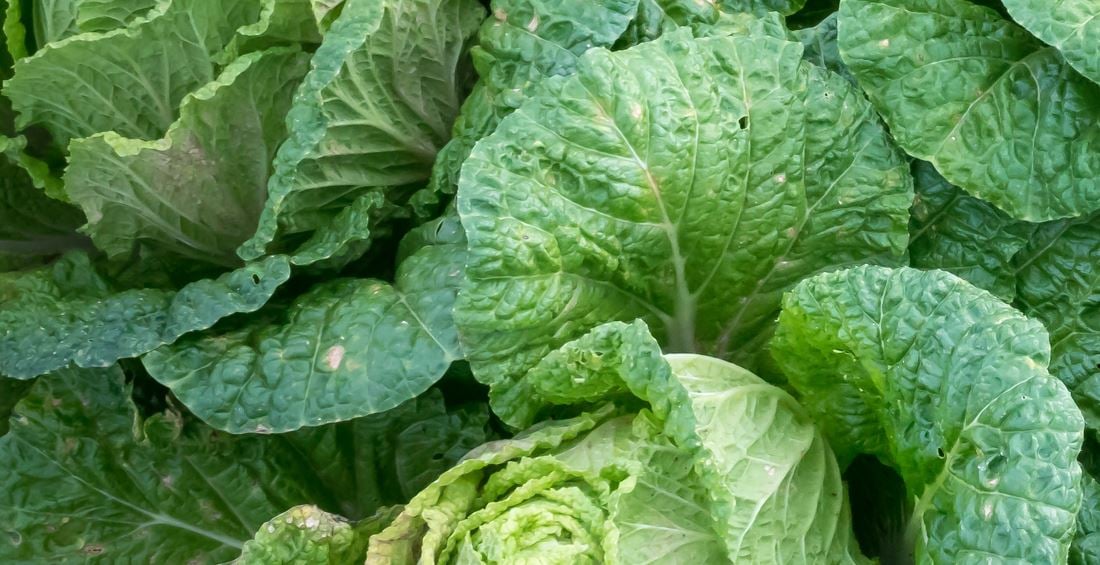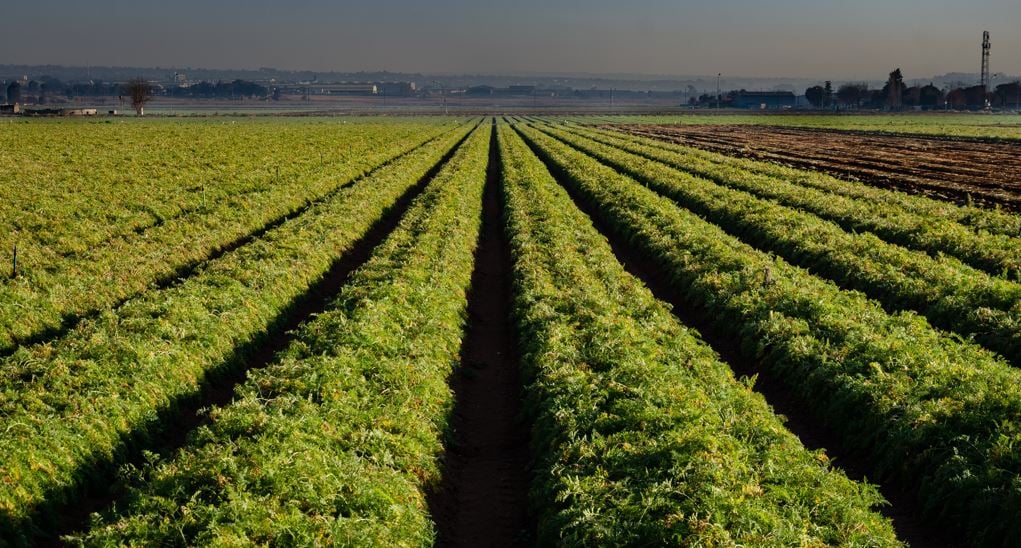How to Start a Profitable Cabbage Farming

Cabbage farming is a profitable venture with many advantages. Combining earning money and spending time with family is a fantastic method to accomplish both simultaneously. Starting a farm for cabbage cultivation demands meticulous planning. Your chances of growing cabbage successfully will increase by implementing these tips.
14 Steps on How to Start a Profitable Cabbage Farming
To begin profitable cabbage farming, you must select a suitable location with good soil quality, access to water, and ample sunlight. To succeed in cabbage cultivation, you must choose the appropriate variety, prepare the soil, and manage pests and fertilizers. This blog will help you generate income through cabbage farming by sharing effective methods.
1. Choose a suitable location
It can be an exhilarating experience to establish a business focused on cultivating cabbage, but it necessitates prudent groundwork and foresight. The fundamental action is to pinpoint the optimal position for nurturing cabbage.
The ideal spot should have well-drained soil, plenty of sunlight, and moderate temperatures for optimal growth. With the right location, your cabbage farming business can have a strong foundation for success. Look for an area with these conditions and easily accessible to you and your customers.
2. Invest in quality equipment:
Cabbage farming is an industry that relies heavily on the use of machines. The cabbage-growing sector has seen growth in recent years, which has increased the need for efficient equipment in this field.
Farmers are utilizing contemporary machinery to reduce expenses and enhance the standard of cabbage production. Investing in quality equipment has a positive impact on the environment as well.
When growing cabbage, you have at your disposal equipment and machinery.
(i). Tractor:
You can accomplish a flourishing garden year-round using plant food and bug repellents, but handling them well is essential.
(ii). Plow:
A plow is a tool that can prepare the soil for planting. The Plow breaks up the ground, preparing it for planting, leveling the Earth, and preparing it for concrete.
(iii). Harrow:
After tilling the land, farmers use a plow to smooth the soil and break up clumps of dirt. When pushed downwards, it works to separate clods of Earth.
A seeder is a tool used for planting cabbage seeds in rows. The source is spread evenly into the ground and gently covered with soil, allowing the roots to grow and form a solid foundation for the plant.
(v). Transplanter:
This device is an excellent help for gardeners in many ways. It saves time, effort, and energy by reducing the bending and kneeling to plant cabbage seedlings in rows.
(vi). Irrigation System:
Irrigation supplies water for agriculture or landscaping from a controlled source such as a river, lake, or underground aquifer. The process includes applying water directly to Earth's surface from an elevated structure (canal, ditch, pipe) or spraying water on plants.
(vii). Fertilizer Applicator:
A fertilizer applicator is a machine or tool to spread liquid fertilizer on the soil. There are many different types of fertilizer applicators, including broadcast spreaders, drop spreaders, and more.
(viii). Storage Equipment:
After harvesting, you can store the cabbage in a cold room or refrigerated truck to keep them fresh and prevent spoilage. These storage facilities can be equipped with temperature and humidity sensors to monitor the storage area's environment prop
3. Prepare the soil
Good soil is essential for cabbage seeds to germinate and grow well when planted. The soil preparation stage is crucial for the successful growth of cabbage plants. The key is supplying the plants with ample fertile soil and natural components.
It ensures that your cabbage plants receive all the nutrients and minerals needed to grow healthy and strong. Analyze the Earth's pH level to determine if it is acidic or alkaline, and alter it if necessary. Boost soil fertility by introducing natural materials like compost or manure.
4. Choose the suitable cabbage varieties
Cabbage is versatile in various shapes, sizes, and colors. Each variety has unique characteristics, such as growth habits, disease resistance, and maturity periods, allowing growers to choose the best type of cabbage for their needs.
Not only are cabbages a popular choice for gardeners due to their ease of maintenance, but they're also incredibly nutritious, and you can enjoy it in various dishes. Choose the right varieties that are suitable for your location and market. Consider factors such as yield potential, market demand, and disease resistance when selecting cabbage varieties.
5. Plant the cabbage seeds
Preparing the soil and selecting the suitable cabbage variety is crucial in growing healthy cabbages. But once your soil is ready and you have chosen the appropriate type, it's time to plant your seeds.
Properly planting seeds helps ensure a successful harvest and may even protect against pests. Easy-to-follow steps can lead to the growth of delicious cabbages. Plant the seeds in rows or beds, spaced according to the variety's recommended spacing. Ensure that you water the seeds frequently and the soil is consistently moist until germination occurs
6. Manage pests and diseases
Cabbage is a valuable crop for many farmers but is also vulnerable to pests and diseases such as aphids, caterpillars, and clubroot. Farmers require diverse techniques to manage problems and illnesses in their crops. Farmers can employ tactics like planting different crops in rotation, introducing beneficial plant species, using natural predators, or applying pesticides to avoid pain from harming crops. Engaging in these activities can ensure the well-being of crops and prevent harm from pests and diseases. They include using natural predators, crop rotation, and organic pesticides.
7. Harvest and sell the cabbage
An easy-to-cultivate and harvest vegetable, cabbage is both tasty and healthful. It's time to reap the cabbage heads when firm and complete. However, handling them carefully is vital so they don't get damaged during harvesting.
If you choose a suitable cabbage, it can remain fresh for a considerable period. Sell the cabbage in local markets, supermarkets, or wholesalers. Set competitive prices and market your cabbage effectively to attract customers.
8. Expand your business
With the growth of your cabbage farming business, it is time to consider expanding. By acquiring more land, investing in better farming equipment, and hiring employees, you can increase your production capabilities and reach new heights in cabbage farming.
Your business can thrive and ensure lasting success with meticulous planning and mindful actions. You can also diversify your products by growing other crops or adding value to your cabbage, such as selling cabbage juice or pickled cabbage.
Sustainable farming practices are essential for reducing environmental impact while increasing profitability. By utilizing renewable energy sources, conserving water, and employing regenerative agricultural techniques, farmers can reduce their ecological footprint, improve soil health and promote biodiversity.
Additionally, sustainable farming practices can also reduce costs associated with energy and water use, as well as increase yields of crops. Cabbage farming is an incredibly profitable business venture - if done correctly. With the proper knowledge and resources, cabbage farmers can take full advantage of the high demand for this versatile vegetable to build a thriving enterprise.
From selecting a suitable variety of cabbage to employing effective strategies in growing, harvesting, and selling it, numerous opportunities are available to those willing to invest in a successful cabbage farm.
As a cabbage farmer, you know that marketing your business is essential to success. With a plethora of options available, selecting the most viable plans for your organization can prove to be a daunting task. Fortunately, you can use several effective strategies to attract customers and increase your cabbage farming business profits.
To generate more interest in your cabbage farm and boost sales, you have numerous advertising options. You can rephrase these ideas by developing captivating social media posts, promoting your business in your surrounding region, or searching for alternative methods of promoting your farm.
9. Attending farmer's markets:
Selling fresh produce directly to customers at farmers' markets is a great way to promote your business and increase your profits.
You can set up a booth, offer samples of your cabbage, and provide detailed information on the nutritional value, preparation tips, and other benefits of purchasing from you. Doing it this way will attract potential buyers and help build relationships with the local community.
10. Social media marketing:
Social networking platforms offer an excellent opportunity to establish connections with potential customers and promote merchandise. With Facebook, Instagram, and Twitter, you can find new customers, engage with them, and drive sales.
You can build brand awareness, increase product visibility, create lasting customer relationships, and generate leads. Businesses with the skills to use social media effectively can benefit from it.
Share photos of your cabbage and farming process, post recipes that feature cabbage, and engage with your audience. Education is the key to success in the cabbage farming industry. By creating educational content, farmers can provide helpful information about growing and selling cabbage and tips on increasing yields and profits.
As a result, farmers can attract more customers, build their brand's reputation, and ultimately boost their bottom line. Employing articles, videos, and social media platforms could aid people in expanding their knowledge about cabbage. Delve into the nutritional properties of cabbage, provide ideas on incorporating it into one's cuisine, or share intriguing facts about its past and diverse applications. d uses.
People recognize your proficiency in your domain through the creation of helpful content. It has the potential to allure individuals who have a liking for your product and are interested in gaining more information about it. Creating a website can effectively showcase your items and broaden your exposure to a broader audience. Exhibiting your business, farming methods, and exceptional products are achievable through the utilization of this software.
An interactive website can give customers a comprehensive idea of your work and its significance. Plus, it's an easy way to expand your customer base and reach new markets. Ensure your website is visually appealing, easy to navigate, and mobile-friendly.
11. Collaborate with local restaurants:
Collaborating with local restaurants to expand sales is a great start. To achieve the task, you can provide fresh cabbage to nearby eateries. Building relationships with neighboring restaurants and other businesses can contribute to your company's sustained growth. Plus, the fresh cabbage you provide will satisfy customers' needs. You can also offer recipes or cooking tips for the restaurants to use with your cabbage.
Ponder the idea of teaming up with nearby organizations for cross-promotional efforts. With the assistance of a local bakery, It is possible to cabbage with baked goods to create an innovative culinary creation. Enabling more individuals to become familiar with and enthusiastic about your company is made possible.
12. Participate in community events:
Community events can enhance your business visibility and help draw potential customers' attention. These events provide a perfect opportunity to showcase your products or services, build relationships with the community, and create positive brand recognition.
These gatherings allow you to network and build relationships with nearby businesses. This tool can assist you in increasing sales, acquiring more clients, and expanding your reach to a larger audience. Provide an accessible area for people to test your products to raise awareness of your business. Distribute cards or papers containing information about your business.
13. Offer delivery services:
Facilitating product deliveries to customers is an intelligent approach that can improve the purchase experience and promote cabbage sales. It can give busy or elderly customers a chance to buy often. Possessing this service delivery idea will not just please your customers but also enable you to engage with a larger audience. Using delivery options has the potential to satisfy customers and expand your business to various locations.
14. Build relationships with your customers:
Developing relationships with your customers is an essential part of building a successful business. Treating your customers right makes them more likely to return repeatedly.
To certify the loyalty of your customers, your business should offer exceptional customer service, listen closely to customer feedback, and provide personalized recommendations tailored to their individual needs. Cabbage growers have the potential to generate more revenue by utilizing digital marketing techniques.
To sum it up, raising cabbage carries minimal risk but provides meager benefits. The populace holds affection for this particular vegetable; however, investors have recently disregarded it. It is imperative to grasp the market intricacies and be adept at cautiously taking calculated risks.




